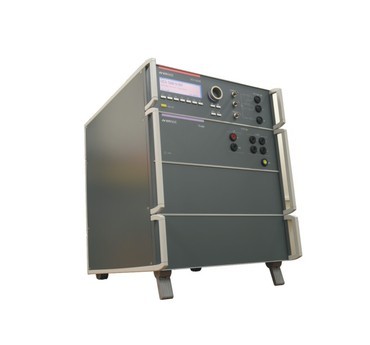- Home
- Products
- EMTEST
- Voltage Surge Generators
- VCS 500N10T
Combined combination wave / Telecom surge generator
Surge pulses occur due to direct or indirect lightning strokes to an external (outdoor) circuit. This leads to currents or electromagnetic fields causing high voltage or current transients. Another source for surge pulses are switching transients originating from switching disturbances and systems faults.
Due to this phenomenon, nearly every electrical and electronical device may suffer from such lightning events which justifies the necessity of surge tests being widely performed. Surge voltage can reach several thousands of volts and surge current is seen to reach several thousands of amps.
Highlights
Combination Wave up to 10kV/5kA
Telecom surge voltage up to 10kV
Telecom surge current up to 666A
Repetition rate 60s @10kV Surge
Built-in coupling for telecom port testing
USB (optical link) and GPIB interface
Interlock
Warning lamp control
Manual operation
Voltage/current monitors
Benefits
VCS 500N10T - Compact surge / Telecom surge generator with built-in coupling for telecom portsEMTEST VCS 500N10T unifies the combination wave surge and telecom surge testing in one unit up to 10kV. Moreover, it offers built-in coupling resistors for telecom port testing.
For combination wave surge tests on high-current mains supply lines its capability can be extended by an external CDN to achieve nominal currents of 100A and more per phase.
By selecting the desired coupling, the source impedance and the coupling capacitor is set automatically whatever CDN is connected.
Fail inputs are offered as standard for DUT monitoring purposes. Peak values of voltage and current are shown in the display and these values are transferred to the software for reporting.
To comply with safety regulations the VCS 500N10T is equipped with a contact to control warning lamps and with a safety interlock.
Pre-programmed Standard test routines allow highest user convenience. Still the VCS 500N10T offers the quick start test routine where parameters can be changed on-line during the test to evaluate the susceptibility level of an individual DUT.
EN 300386 V1.3.2
EN 61000-4-5
EN 61000-4-9
IEC 60255-22-5
IEC 61000-4-5
IEC 61000-4-9
IEC 61326
IEC 61850-3
ITU-T K.12
ITU-T K.20
ITU-T K.21
ITU-T K.45
EN 61000-4-5
EN 61000-4-9
IEC 60255-22-5
IEC 61000-4-5
IEC 61000-4-9
IEC 61326
IEC 61850-3
ITU-T K.12
ITU-T K.20
ITU-T K.21
ITU-T K.45



